Toyota Corolla Commercial Review 2025
Toyota Corolla Commercial At A Glance
As we move away from traditional diesel commercial vehicles, the car-derived van is making a comeback, with small businesses putting efficiency and low running costs ahead of other criteria such as load volume and payload. After all, for many small businesses, these aren’t huge priorities, whereas low overheads and functionality are.
The Toyota Corolla Commercial has already found a niche, with a number of fleet buyers choosing it to offer a car-like experience for their drivers, while offering a flatter, more spacious interior than an estate.
There’s a security element, too – aside from its blacked-out rear windows, the Corolla looks otherwise just like a conventional estate car, so will largely go unnoticed by van thieves.
Park it in a multi-storey car park or on a suburban driveway and, to the casual observer, it’s nothing more than a plain estate car. It looks even more plain because, in the Corolla Commercial, there are no alloy wheels – just traditional plastic covers that are cheap and easy to replace.
Yet inside, its very different. In order to meet van regulations, Toyota has had to ensure that the Corolla Commercial cannot be converted back to an estate. As well as the opaque rear windows, that means it also gets a full-height mesh bulkhead and a completely flat load floor.
The mounting points for the rear seat belts and seat base are removed, with the load bay covered by a heavy-duty rubberised mat. There are extra lashing points, while the load volume of 1.3 cubic metres is modest, but extremely functional. Total maximum payload is 465kg.
Only one specification is available and it’s fairly well equipped, with air conditioning, heated seats and a rear-view camera included, plus one USB-C socket and an eight-inch touchscreen, which is fairly intuitive to use. Smartphone integration is possible with Apple CarPlay and Android Auto.
Heating and ventilation are controlled by proper buttons, which is welcome and there are two volume controls on the dash and steering wheel that mean you don’t have to fiddle with the touchscreen on the move.
Safety kit includes Adaptive Cruise Control and Lane Departure Alert, plus Lane Trace Assist, which helps keep the vehicle centred in its traffic lane with light steering inputs.
There’s no blind-pot warning, though and this is quite a big oversight, as with the rear side windows blacked out, there’s no over-shoulder visibility – it nearly caught us out on the motorway when another driver tried to undertake us after we’d moved out to allow them access from a slip-road – definitely a job for the facelift.
Otherwise, the package is highly appealing, not least because of Toyota’s warranty package, which can last up to 10 years with dealer servicing.
Driving the Toyota Corolla Commercial
The hybrid set-up of the Corolla Commercial is its most fascinating aspect – it uses a fairly traditional 1.8-litre petrol engine, which works alongside a 53kW/600v permanent magnet synchronous electric motor and a lithium-ion battery.
Together, they deliver a respectable 120bhp but a fairly modest torque output of 142Nm. The power is transmitted to the road through the front wheels, via a single-speed CVT transmission.
You always pull away with the electric motor and the van will remain in EV mode until the battery is depleted or it senses you need extra power based on your throttle input. At higher speeds, the petrol engine takes centre stage, while leaving the motor to act as a generator, charging the battery.
If you need a boost of acceleration, it will join the party, but otherwise it sits quietly in the background, taking over completely at a gentle cruise, or when driving in heavy traffic. There’s also a ‘B’ mode, which maximises regenerative braking to feed power back into the battery.
There are three different driving modes: Eco, Normal or Sport, selected via a switch on the dash. Eco mode is most efficient and will suit most daily tasks perfectly well. Plus, if you do need to access power in a hurry, such as in an emergency manoeuvre, a jab on the throttle pedal will override it.
According to Toyota, the Commercial delivers 55.6mpg to 61.4mpg on the WLTP combined efficiency cycle, but our experience returned far better than this – one on fairly congested A-road drive of over 30 miles, we saw an astonishing 97.6mpg average on the on-board computer. Over a longer 170-mile drive we averaged 70.1mpg. Our worst performance, in mostly stop-start motorway traffic, saw 63.1mpg. Impressive stuff.
We cite the van’s efficiency monitor as one of the biggest reasons for this – the screen display tells you the percentage of battery-only driving since you began your journey, how much charge is left and has a bar chart showing you how close to 100mpg you get in each five-minute section of driving.
Otherwise, it’s a very pleasant drive. The engine is quiet and refined even when not running in EV mode, there’s the merest of jolts when switching between petrol and electric, but it’s barely discernible.
Wind and road noise are well supressed too. It cruises very happily at motorway speeds and a further advantage of it being a car-derived van is that it can be driven at car and not LCV speed limits, so 60mph on single-carriageway national speed limit roads, and 70mph on dual carriageways, which would be 10mph lower in a purpose-built van.
Handling is surprisingly entertaining, but the steering lacks feedback and the controls all feel very light, typical of vehicles from Japanese brands.
Toyota Corolla Commercial interior
It fares well on the road, but does the Toyota Corolla Commercial truly cut it as a van?
Well, it depends what you need. If volume and payload are priorities, then no – but we very much doubt they will be for anyone considering a vehicle of this type. If functionality and practicality are key considerations, then it’s a decent package.
You access the 1.3 cubic metre cargo area via a rear tailgate and while the original back doors remain, their windows (plus the larger rear glass areas) are covered by an opaque film.
The load floor is wooden, covered with a tailored-to-fit rubber mat and adorned with six lashing points. There’s a half-height steel bulkhead with mesh guard to separate the cabin from the load bay.
The additional out-of-sight stowage for smaller items in what would have been the estate car’s rear passenger footwells is very handy. There’s also separate stowage under the load bay floor at the rear, which is useful for computer equipment or power tools.
The estate car’s interior light remains and operates when the tailgate or either rear side door is opened, but because it’s designed for passenger cars, it isn’t especially bright.
There’s a maximum load width of 1432mm, but this narrows to 952mm between the wheelarches, meaning there’s no hope of getting a Euro pallet in there, but then it’s not the kind of van where that’s likely to be a major consideration.
Model History
- January 2022: Toyota Corolla Commercial launched in the UK
- February 2023: Toyota Corolla Commercial updated for 2023
January 2022
Toyota Corolla Commercial launched in the UK
The Toyota Corolla Commercial is available in a single version. Standard features include a full metal bulkhead, eight-inch multimedia display, smartphone integration with Apple Car Play and Android Auto, reversing camera, automatic headlights, heated and power adjustable door mirrors, dual-zone air conditioning and heated, height-adjustable seats with power lumbar adjustment for the driver.
The van is also equipped with Toyota Safety Sense active safety and driver assistance systems, including Adaptive Cruise Control and Lane Keep Assist.
The on-the-road price is £26,495; commercial vehicle on-the-road price (excluding VAT) is £22,134. In common with all Toyota vehicles, Corolla Commercial has a three-year new vehicle warranty, after which it qualifies for the free Toyota Relax warranty of up to 10 years/100,000 miles.
February 2023
Toyota Corolla Commercial updated for 2023
The updated 2023 Corolla Commercia model matches its Hatchback and Touring Sports passenger car counterparts in adopting Toyota’s new fifth generation hybrid technology.
The upgraded 1.8-litre powertrain delivers more power, faster acceleration and a more rewarding drive while maintaining the van’s high fuel and emissions efficiency.
The system’s principal components have been comprehensively redesigned to save weight, reduce losses and improve performance – changes that include the introduction of a more powerful lithium-ion battery.
Corolla Commercial further gains the latest Toyota Safety Sense package of advanced safety and driver assistance systems, with more functions and increased hazard detection capabilities.
Total power from the 1.8-litre system is 138bhp, bringing a 1.7-second reduction in the 0-62mph time to 9.4 seconds. CO2 emissions are from 100g/km, with fuel economy from 64.2mpg (all figures WLTP combined cycle).


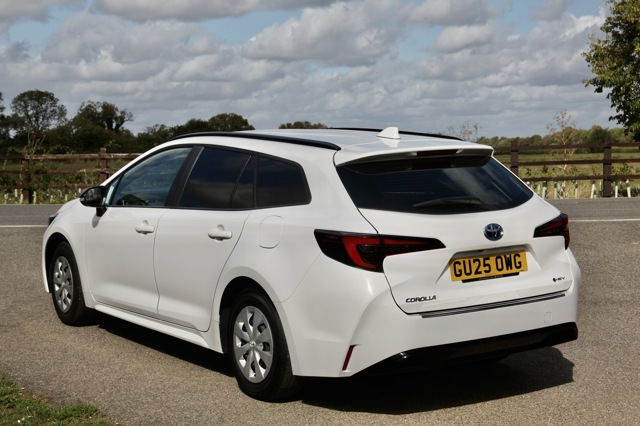
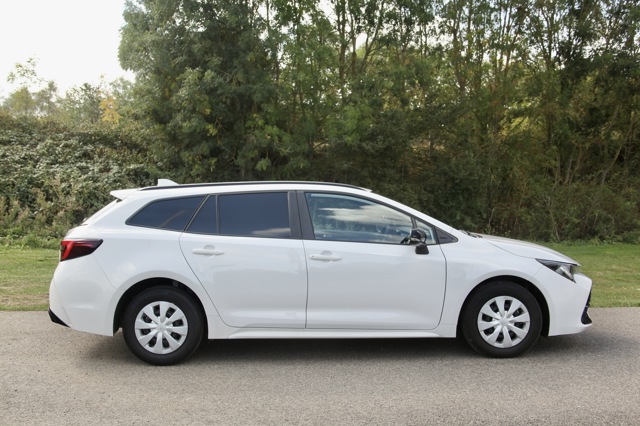
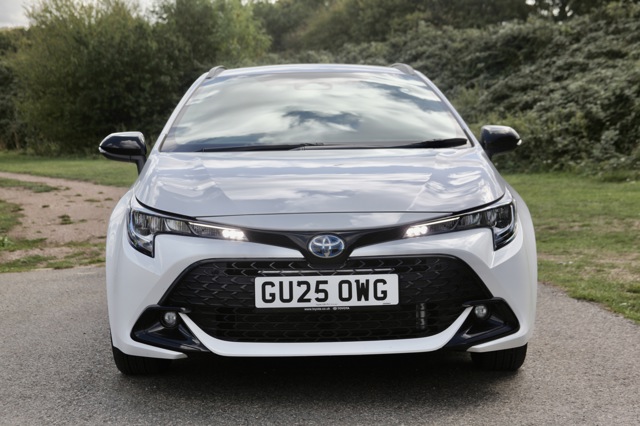
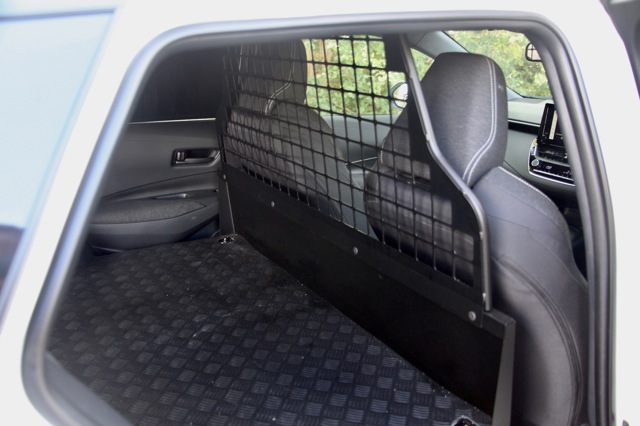
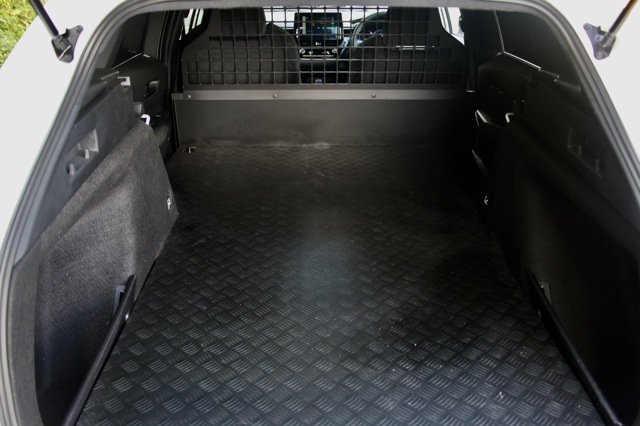
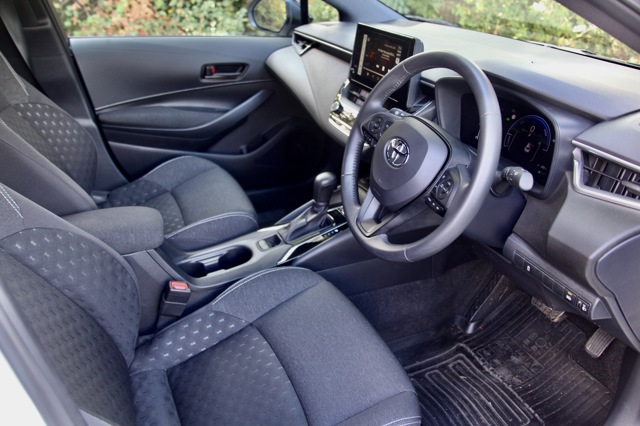

 Impressively efficiency and well refined, clever design, usual Toyota reliability.
Impressively efficiency and well refined, clever design, usual Toyota reliability.
 Limited payload and no blind spot alert.
Limited payload and no blind spot alert.